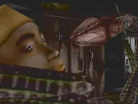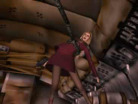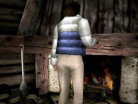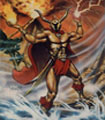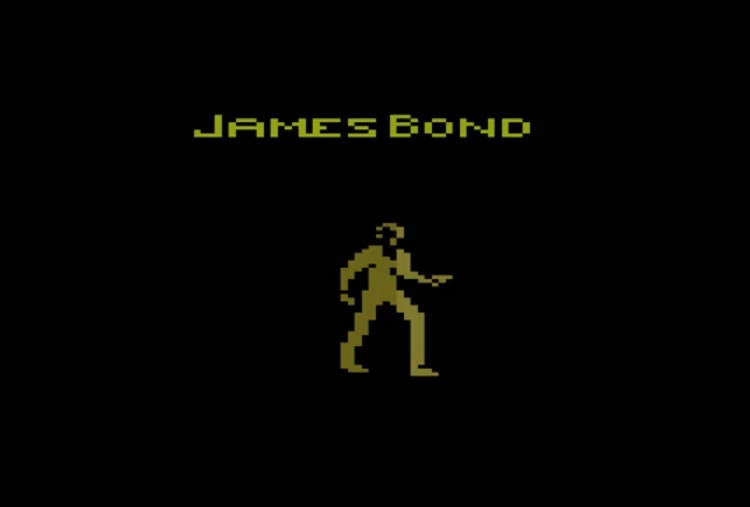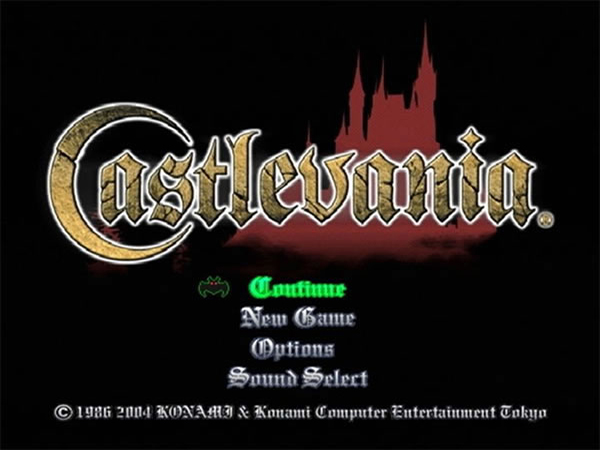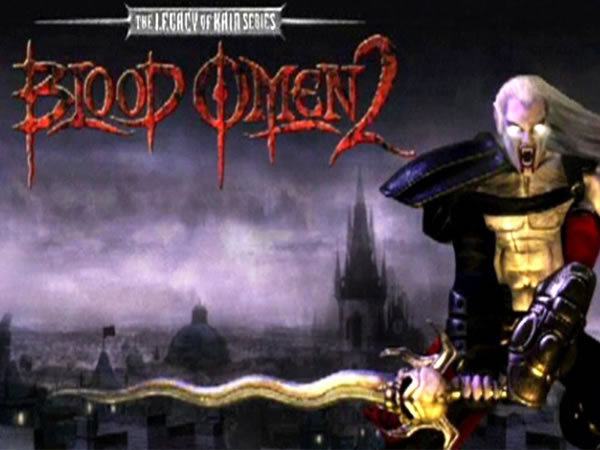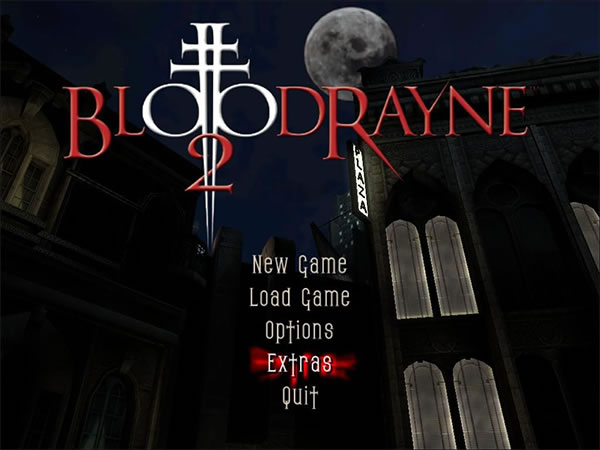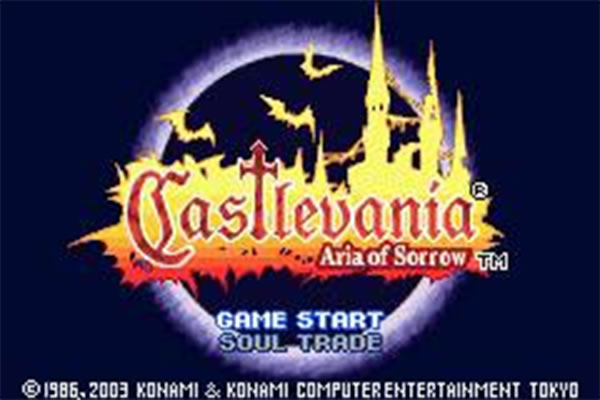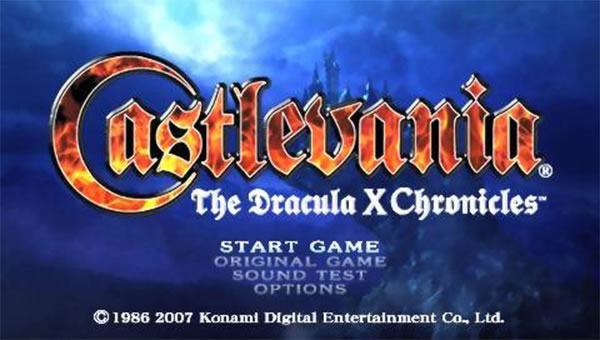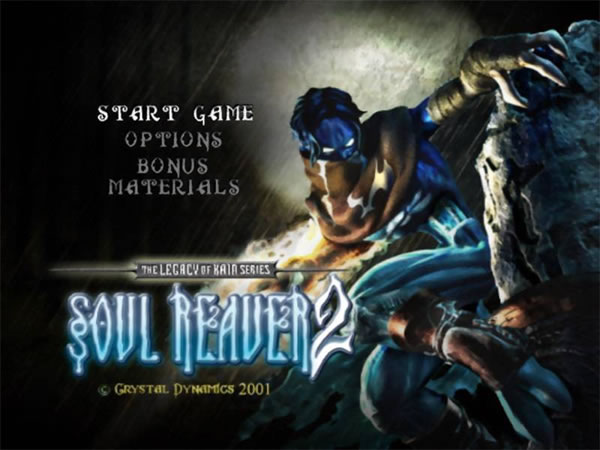- CLASSIC MAGAZINES
- REVIEW CREW
A show recapping what critics thought back
when classic games first came out! - NEXT GENERATION'S BEST & WORST
From the worst 1-star reviews to the best
5-stars can offer, this is Next Generation! - NINTENDO POWER (ARCHIVE)
Experience a variety of shows looking at the
often baffling history of Nintendo Power! - MAGAZINE RETROSPECTIVE
We're looking at the absolutely true history of
some of the most iconic game magazines ever! - SUPER PLAY'S TOP 600
The longest and most ambitious Super NES
countdown on the internet! - THEY SAID WHAT?
Debunking predictions and gossip found
in classic video game magazines! - NEXT GENERATION UNCOVERED
Cyril is back in this spin-off series, featuring the
cover critic review the art of Next Generation! - HARDCORE GAMER MAGAZING (PDF ISSUES)
Download all 36 issues of Hardcore Gamer
Magazine and relive the fun in PDF form!
- REVIEW CREW
- ELECTRONIC GAMING MONTHLY
- ELECTRONIC GAMING MONTHLY RANKS
From Mario to Sonic to Street Fighter, EGM
ranks classic game franchises and consoles! - ELECTRONIC GAMING MONTHLY BEST & WORST
Counting down EGM’s best and worst reviews
going year by year, from 1989 – 2009! - ELECTRONIC GAMING BEST & WORST AWARDS
11-part video series chronicling the ups and
downs of EGM’s Best & Worst Awards!
- ELECTRONIC GAMING MONTHLY RANKS
- GAME HISTORY
- GAME OVER: STORY BREAKDOWNS
Long-running series breaking down game
stories and analyzing their endings! - A BRIEF HISTORY OF GAMING w/ [NAME HERE]
Real history presented in a fun and pithy
format from a variety of game historians! - THE BLACK SHEEP
A series looking back at the black sheep
entries in popular game franchises! - INSTANT EXPERT
Everything you could possibly want to know
about a wide variety of gaming topics! - FREEZE FRAME
When something familiar happens in the games
industry, we're there to take a picture! - I'VE GOT YOUR NUMBER
Learn real video game history through a series
of number-themed episodes, starting at zero! - GREAT MOMENTS IN BAD ACTING
A joyous celebration of some of gaming's
absolute worst voice acting!
- GAME OVER: STORY BREAKDOWNS
- POPULAR SHOWS
- DG NEWS w/ LORNE RISELEY
Newsman Lorne Riseley hosts a regular
series looking at the hottest gaming news! - REVIEW REWIND
Cyril replays a game he reviewed 10+ years
ago to see if he got it right or wrong! - ON-RUNNING FEUDS
Defunct Games' longest-running show, with
editorials, observations and other fun oddities! - DEFUNCT GAMES QUIZ (ARCHIVE)
From online quizzes to game shows, we're
putting your video game knowledge to the test!- QUIZ: ONLINE PASS
Take a weekly quiz to see how well you know
the news and current gaming events! - QUIZ: KNOW THE GAME
One-on-one quiz show where contestants
find out if they actually know classic games! - QUIZ: THE LEADERBOARD
Can you guess the game based on the classic
review? Find out with The Leaderboard!
- QUIZ: ONLINE PASS
- DEFUNCT GAMES VS.
Cyril and the Defunct Games staff isn't afraid
to choose their favorite games and more! - CYRIL READS WORLDS OF POWER
Defunct Games recreates classic game
novelizations through the audio book format!
- DG NEWS w/ LORNE RISELEY
- COMEDY
- GAME EXPECTANCY
How long will your favorite hero live? We crunch
the numbers in this series about dying! - VIDEO GAME ADVICE
Famous game characters answer real personal
advice questions with a humorous slant! - FAKE GAMES: GUERILLA SCRAPBOOK
A long-running series about fake games and
the people who love them (covers included)! - WORST GAME EVER
A contest that attempts to create the worst
video game ever made, complete with covers! - LEVEL 1 STORIES
Literature based on the first stages of some
of your favorite classic video games! - THE COVER CRITIC
One of Defunct Games' earliest shows, Cover
Critic digs up some of the worst box art ever! - COMMERCIAL BREAK
Take a trip through some of the best and
worst video game advertisements of all time! - COMIC BOOK MODS
You've never seen comics like this before.
A curious mix of rewritten video game comics!
- GAME EXPECTANCY
- SERIES ARCHIVE
- NINTENDO SWITCH ONLINE ARCHIVE
A regularly-updated list of every Nintendo
Switch Online release, plus links to review! - PLAYSTATION PLUS CLASSIC ARCHIVE
A comprehensive list of every PlayStation
Plus classic release, including links! - RETRO-BIT PUBLISHING ARCHIVE
A regularly-updated list of every Retro-Bit
game released! - REVIEW MARATHONS w/ ADAM WALLACE
Join critic Adam Wallace as he takes us on a
classic review marathon with different themes!- DEFUNCT GAMES GOLF CLUB
Adam Wallace takes to the links to slice his way
through 72 classic golf game reviews! - 007 IN PIXELS
Adam Wallace takes on the world's greatest spy
as he reviews 15 weeks of James Bond games! - A SALUTE TO VAMPIRES
Adam Wallace is sinking his teeth into a series
covering Castlevania, BloodRayne and more! - CAPCOM'S CURSE
Adam Wallace is celebrating 13 days of Halloween
with a line-up of Capcom's scariest games! - THE FALL OF SUPERMAN
Adam Wallace is a man of steel for playing
some of the absolute worst Superman games! - THE 31 GAMES OF HALLOWEEN
Adam Wallace spends every day of October afraid
as he reviews some of the scariest games ever! - 12 WEEKS OF STAR TREK
Adam Wallace boldly goes where no critic has
gone before in this Star Trek marathon!
- DEFUNCT GAMES GOLF CLUB
- DAYS OF CHRISTMAS (ARCHIVE)
Annual holiday series with themed-episodes
that date all the way back to 2001!- 2015: 30 Ridiculous Retro Rumors
- 2014: 29 Magazines of Christmas
- 2013: 29 Questionable Power-Ups of Christmas
- 2012: 34 Theme Songs of Christmas
- 2011: 32 Game Endings of Christmas
- 2010: 31 Bonus Levels of Christmas
- 2009: 30 Genres of Christmas
- 2008: 29 Controls of Christmas
- 2007: 34 Cliches of Christmas
- 2006: 33 Consoles of Christmas
- 2005: 32 Articles of Christmas
- 2004: 31 Websites of Christmas
- 2003: 29 Issues of Christmas
- 2002: 28 Years of Christmas
- 2001: 33 Days of Christmas
- NINTENDO SWITCH ONLINE ARCHIVE
- REVIEW ARCHIVE
- FULL ARCHIVE
D2
Let's just get this out of the way, this game has nothing to do with the first D. Sega's release of Warp's four disc D2 is proof that composer-turned-director Kenji Eno is both a genius and a maniac. The first D, a Myst-style RPG, didn't offer much in way of story, gameplay or enemies so nobody (myself included) gave a shit about Laura or her old man. Four years after the original D2 (which itself is now 6 and a half years old) fortunately the second outing improves upon its predecessor in every possible way. However it isn't entirely unlike its predecessor, it too has flaws.
In D2 you play as Laura, a businesswoman who looks more like a tourist and ends up being something of a world savior. Laura inexplicably seems to live in a universe where she's completely mute, but no one ever asks "hey Laura, why the hell won't you just say something?" She does talk by the way, "off camera." Another inexplicable Warp quirk, I guess. The game covers a lot of crazy fantasy/science territory, starting with the hijacking of the plane Laura's on by two violent terrorists, and then heading (literally - the plane crashes) into the arctic wilderness of Canada, which also houses some local research centers and a lot of important clues as to why the dead passengers are turning into monsters and why Laura's compact just happens to glow like the doorway in Poltergeist.
Once the game starts, it's up to you and your friend Kimberly Fox to figure out why people are turning into hideous monsters, how they're going to find help, and how Laura survived eight days in the snow without a blanket.
The minute you step out of the cabin where the game begins, you'll experience the best and the worst parts of the game all at once. It's incredibly beautiful (for the time anyway, but it still holds up well), with the snow drifts misting around you realistically, the vehicles and objects full of extraordinary detail, and the monsters are full of gory details. Unfortunately, once you start trudging, you'll also experience the monotony and snail-pacing that bog this game down. I can answer the first question you'll be asking already - yes, you'll have to walk all the way over there, and then all the way back, and then all the way to that other place and then all the way back to the first place, again. Twice. Snow may look pretty at first, but once you start hiking through it for twenty minutes, it quickly loses its appeal. What makes matters worse is that Warp seems to enjoy cut scenes so much that even the non-boring (aka non-walking) parts of the game are made just that by having to show you, in interminable detail, every little action undertaken by Laura. Every first aid spray she finds in a drawer, every object she notices, and every door she opens must be played out in 10 to 15 second cut scenes.
As for story, this is one of the most adult games I have ever played, with a plotline that covers everything from poetry and evolution to drug addiction, and told with a sobriety and violence more shocking than your average Quentin Tarantino film. Add to that the insane amount of phallic references in the game, and you've got yourself a console title that has truly been made for adults - which may be why there's just so much damn dialogue in the game.
The storyline may have worked if the pacing were better, but it seems as though Sega spent all of their time making sure that the tentacle sex wasn't visible, completely ignoring the seconds upon seconds of dead space that pads every phrase, sentence, or monologue. If the voice acting was completely out of sync with the character's lips, it might have worked better then what D2 delivers in its final American form. Characters will sync up with the spoken dialogue for a moment or two, and then suddenly slide completely out of sync, the most classic example being when a character's lips move before and after a sentence for one or two seconds.
Combat is a mixed bag, for the first few fights, you'll be excited by the mixture of classic RPG gameplay with first person action. To kill the bloomers, you'll have to aim at their weak points, react quickly to their movements, and know when to reload your weapons without leaving yourself open to attacks. Unlike most shooters, however, you can also take the time to cycle through your inventory and use health sprays and meat, or change the gun you'd like to use. Unfortunately, the repetitive nature of the battles (which is unavoidable considering their simplicity) won't you're your interests for long. There just isn't enough complexity or variety to keep you interested, especially when your only joy after finishing a battle is in knowing that you'll have to walk through snow again for another five minutes or more.
As for the adventure elements, it's mostly a matter of simply writing down a number in one area, or finding a key, and bringing it to another area. If you have the item that is needed to progress, then Laura will automatically bring it out, taking away most of the challenge, and leaving you with a Myst interface and speed without any of the brain numbing puzzles.
D2 ends up with all the worst aspects of a badly translated foreign film - it doesn't quite make sense, the lips never sync up right, and the pacing will bore you to tears. While there was definitely potential in the way that Warp wanted to tell the story of D2, the end product suffers specifically because of the game's dependence on dragging you through every tiny detail of the plot. Despite its minimal and haunting score, despite some very mature subject matter, and despite some of the best graphics to hit the Dreamcast, D2 turns out to be mediocre.
In D2 you play as Laura, a businesswoman who looks more like a tourist and ends up being something of a world savior. Laura inexplicably seems to live in a universe where she's completely mute, but no one ever asks "hey Laura, why the hell won't you just say something?" She does talk by the way, "off camera." Another inexplicable Warp quirk, I guess. The game covers a lot of crazy fantasy/science territory, starting with the hijacking of the plane Laura's on by two violent terrorists, and then heading (literally - the plane crashes) into the arctic wilderness of Canada, which also houses some local research centers and a lot of important clues as to why the dead passengers are turning into monsters and why Laura's compact just happens to glow like the doorway in Poltergeist.
Once the game starts, it's up to you and your friend Kimberly Fox to figure out why people are turning into hideous monsters, how they're going to find help, and how Laura survived eight days in the snow without a blanket.
The minute you step out of the cabin where the game begins, you'll experience the best and the worst parts of the game all at once. It's incredibly beautiful (for the time anyway, but it still holds up well), with the snow drifts misting around you realistically, the vehicles and objects full of extraordinary detail, and the monsters are full of gory details. Unfortunately, once you start trudging, you'll also experience the monotony and snail-pacing that bog this game down. I can answer the first question you'll be asking already - yes, you'll have to walk all the way over there, and then all the way back, and then all the way to that other place and then all the way back to the first place, again. Twice. Snow may look pretty at first, but once you start hiking through it for twenty minutes, it quickly loses its appeal. What makes matters worse is that Warp seems to enjoy cut scenes so much that even the non-boring (aka non-walking) parts of the game are made just that by having to show you, in interminable detail, every little action undertaken by Laura. Every first aid spray she finds in a drawer, every object she notices, and every door she opens must be played out in 10 to 15 second cut scenes.
As for story, this is one of the most adult games I have ever played, with a plotline that covers everything from poetry and evolution to drug addiction, and told with a sobriety and violence more shocking than your average Quentin Tarantino film. Add to that the insane amount of phallic references in the game, and you've got yourself a console title that has truly been made for adults - which may be why there's just so much damn dialogue in the game.
The storyline may have worked if the pacing were better, but it seems as though Sega spent all of their time making sure that the tentacle sex wasn't visible, completely ignoring the seconds upon seconds of dead space that pads every phrase, sentence, or monologue. If the voice acting was completely out of sync with the character's lips, it might have worked better then what D2 delivers in its final American form. Characters will sync up with the spoken dialogue for a moment or two, and then suddenly slide completely out of sync, the most classic example being when a character's lips move before and after a sentence for one or two seconds.
Combat is a mixed bag, for the first few fights, you'll be excited by the mixture of classic RPG gameplay with first person action. To kill the bloomers, you'll have to aim at their weak points, react quickly to their movements, and know when to reload your weapons without leaving yourself open to attacks. Unlike most shooters, however, you can also take the time to cycle through your inventory and use health sprays and meat, or change the gun you'd like to use. Unfortunately, the repetitive nature of the battles (which is unavoidable considering their simplicity) won't you're your interests for long. There just isn't enough complexity or variety to keep you interested, especially when your only joy after finishing a battle is in knowing that you'll have to walk through snow again for another five minutes or more.
As for the adventure elements, it's mostly a matter of simply writing down a number in one area, or finding a key, and bringing it to another area. If you have the item that is needed to progress, then Laura will automatically bring it out, taking away most of the challenge, and leaving you with a Myst interface and speed without any of the brain numbing puzzles.
D2 ends up with all the worst aspects of a badly translated foreign film - it doesn't quite make sense, the lips never sync up right, and the pacing will bore you to tears. While there was definitely potential in the way that Warp wanted to tell the story of D2, the end product suffers specifically because of the game's dependence on dragging you through every tiny detail of the plot. Despite its minimal and haunting score, despite some very mature subject matter, and despite some of the best graphics to hit the Dreamcast, D2 turns out to be mediocre.
HOME |
CONTACT |
NOW HIRING |
WHAT IS DEFUNCT GAMES? |
NINTENDO SWITCH ONLINE |
RETRO-BIT PUBLISHING
Retro-Bit |
Switch Planet |
The Halcyon Show |
Same Name, Different Game |
Dragnix |
Press the Buttons
Game Zone Online | Hardcore Gamer | The Dreamcast Junkyard | Video Game Blogger
Dr Strife | Games For Lunch | Mondo Cool Cast | Boxed Pixels | Sega CD Universe | Gaming Trend
Game Zone Online | Hardcore Gamer | The Dreamcast Junkyard | Video Game Blogger
Dr Strife | Games For Lunch | Mondo Cool Cast | Boxed Pixels | Sega CD Universe | Gaming Trend
Copyright © 2001-2025 Defunct Games
All rights reserved. All trademarks are properties of their respective owners.
All rights reserved. All trademarks are properties of their respective owners.






